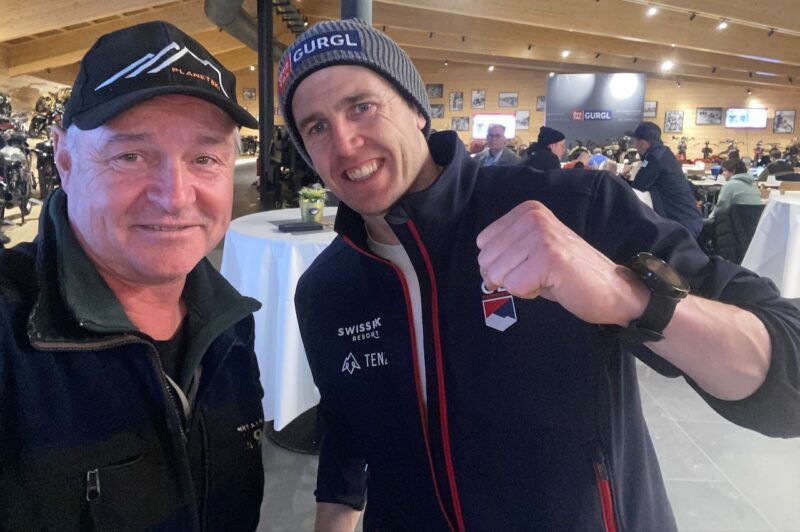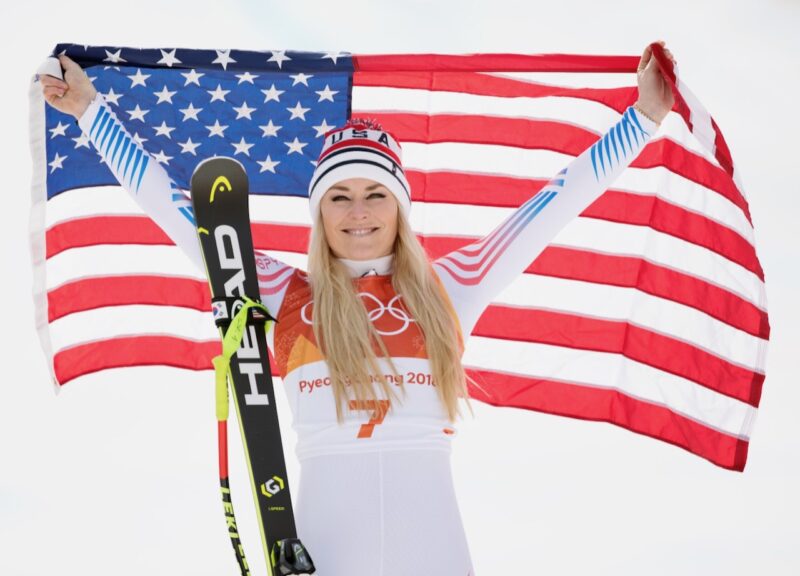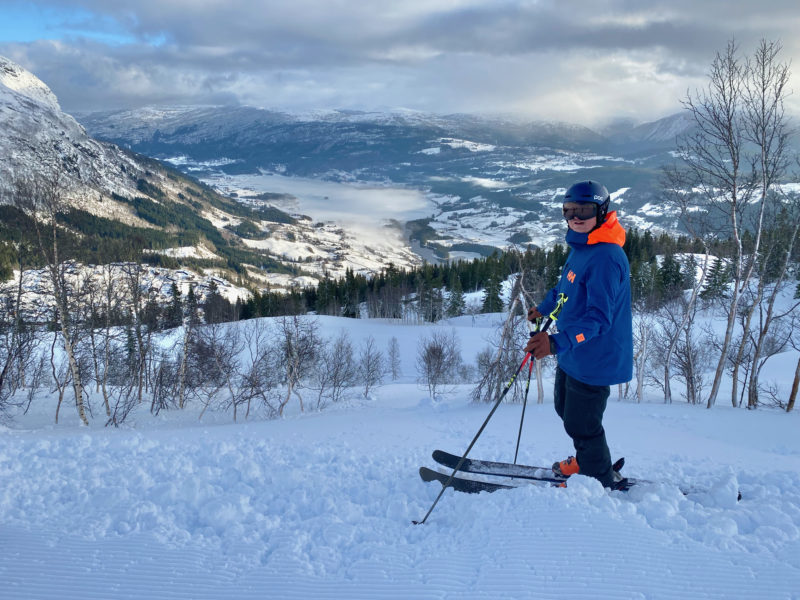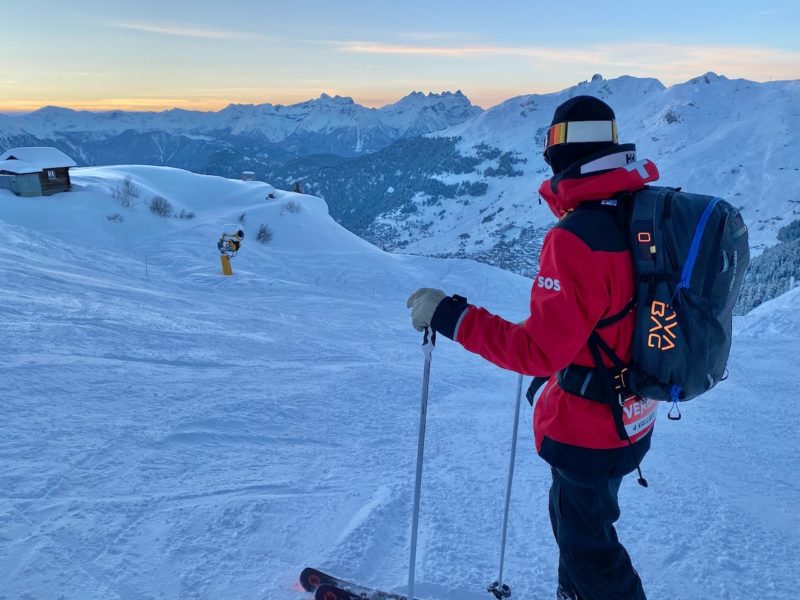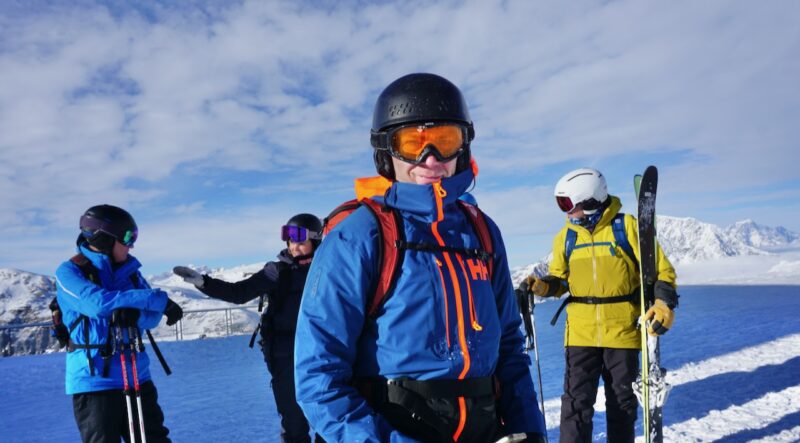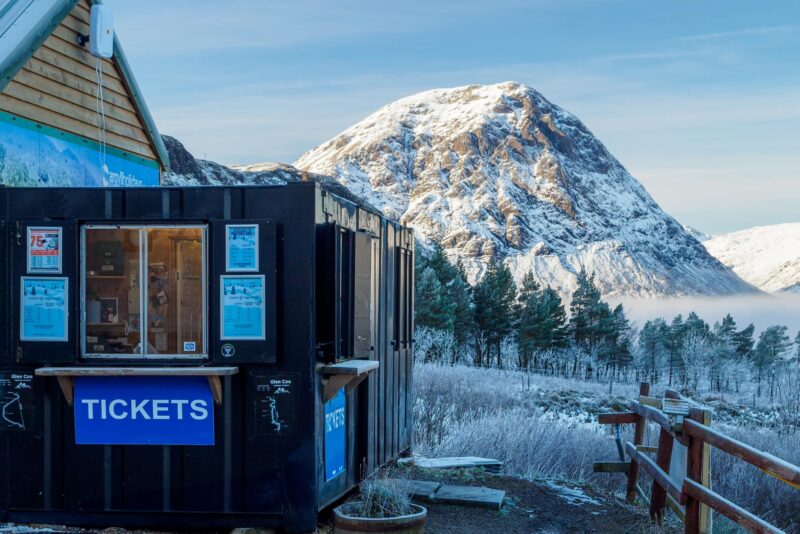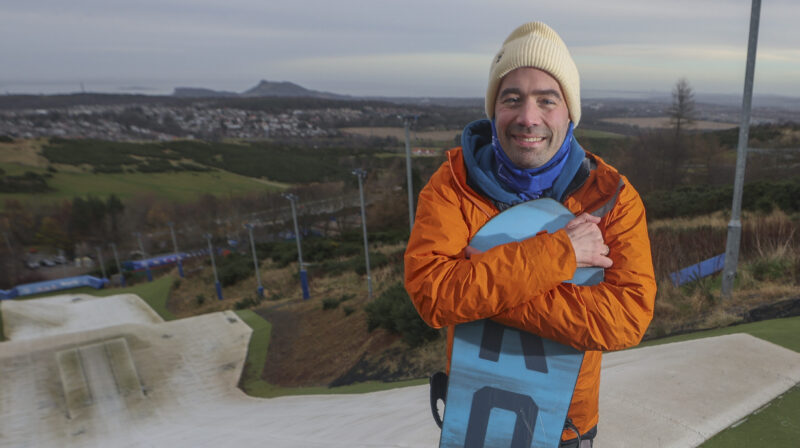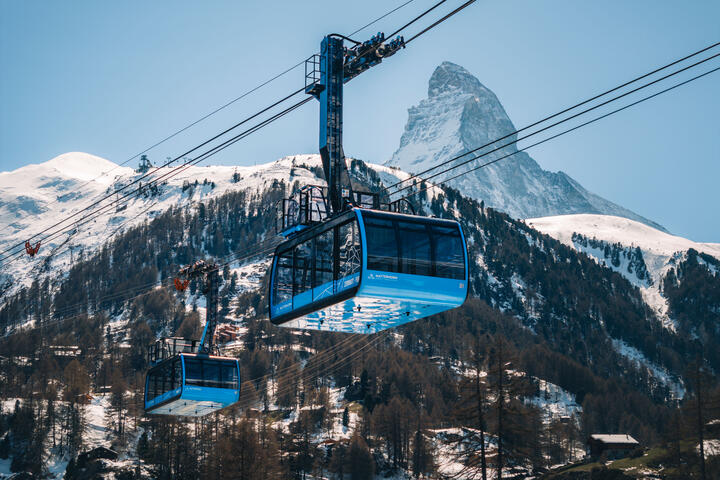Public Demand Grows for People Who Ski Out of Control To Be Held Accountable
7th March 2023
Last modified on March 13th, 2023
Recently we posted an article about the rising number of accidents with a major hospital reporting it was struggling to cope. The response has been phenomenal. UPDATED
We’ve had hundreds of replies & reaction from PlanetSKI readers of injuries, near misses and bad behaviour on the slopes to our recent stories.
Many want action taken, either to educate or punish those skiers and snowboarders who allegedly commit offences and have anti-social behaviour.
Here is our original story where Dr Jean-Jacques Banihachémi from The Hôpital Sud de Grenoble in France claimed the number of injures on the slopes was at “catastrophic” levels:
We stress that Dr Banihachémi is talking about all injuries, not just ones involving collisions.
We have been flooded with responses from readers over on the PlanetSKI Facebook page.
We let them tell the story and talk about the issues in their own words.
First some examples.
Daniel Kob – Just over a week ago i was hit by out of control snowboarder.
I was knocked unconscious and left for dead by them lucky a couple of people saw me and came to my aid but the snowboarder was gone.. impact smashed my goggles and cracked my helmet.
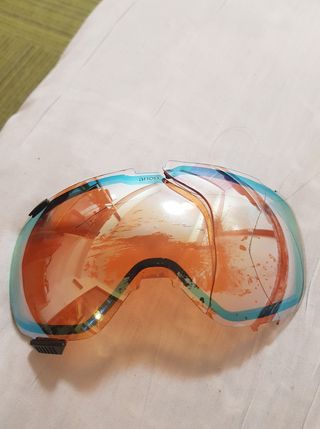
Image c/o Daniel Kob.

Image c/o Daniel Kob.
Lauren Elise Polson – We’re just heading home from VT after a week of learning to snowboard and half the battle learning was space on the green slopes and avoiding out of control skiers.
I’ve skied for 20+ years and previously worked in the Alps and never seen it so bad.
There was near to zero ski patrol presence to slow people down and so many people just not caring about other piste users.
Apparently the ski schools have been asking for more netting to be put in on the baby slopes to slow people down, but so far the resort hasn’t done anything.
Our instructor was also telling us that a lot of the instructors are off with injuries because of crashes. Some with some very serious injuries.
This obviously isn’t great for people wanting to learn too.
Stu Owen – You should have seen Bansko over half term, wheeeew, not a lot of space at the best of times and far too many people on the slopes, a very large number of them acutely unaware of how to actually ski or board… I’ve never seen so many collisions and people getting stretchered off the mountain!
Anne Bowman – Really interesting week for us in France where, like many are saying, people were skiing way too fast.
There also seemed to be quite a few people who didn’t know the basics about speed or even what to do when there was an accident.
We encountered a helicopter rescuing someone after a crash and people were pushing past to get the best footage rather than giving the mountain teams space.
As for people pushing and shoving off chair lifts . . (one guy took 3 of us out!)
Edward Bunn – I broke my arm yesterday… minding my own business coming into a lift queue, only to be cut up by a child out of control, the rest is history and a lot of pain.
Susan Iband – When skis were longer you couldn’t get far out of control before your skis crossed.
Nowadays it is so easy to go fast without being in control.
Also people just stop anywhere on the piste and don’t pull over at edge.
Mark Ian Harris – During a half term trip to Andorra, yes the slopes was hard and icy patches under snow cannon & I had a fall on the first day on hired skis not understanding the conditions.
But after looking at the skis even I understood they wasn’t prepared correct.
I took back and the shop agreed and the rest of the week with sharpened skis and care enjoyed the slopes.
Carol McCaffery – Just back from Morzine.
People seem to have lost any modicum of good manners or patience at all, not just on the pistes.
The number of grown men that ski fast into the ski lift queue right through people to get to the front was quite something.
Why do boarders have to sit in groups in the middle of the slopes?
Also noticeable were the number of instructors not wearing helmets!
Kathy Moyse – Last month I came across a bloke so drunk at 2.30 pm that he was fast asleep in the middle of the piste.
Me and another guy got him to the edge.
I hailed an ESF instructor who was coming down but he just shrugged and said it wasn’t his problem.
I reported the drunk to sécurité de piste and they retrieved him.
1) I hope he was massively fined
2) It should be part of the job of all resort employees to enforce safe skiing practices including removing passes.
I have permanent nerve damage in my back from where I was hit at speed 6 years ago whilst waiting at the edge of a piste for a friend.
It should be a legal requirement to remain at the the site of the collusion as with a car accident.
The bloke just pissed off.
Jemma Lewis – Broken arm for me this year as a local was going way too fast and rammed into me!
Andy Cranmer – Wonder how many are self- inflicted or the cause of another.
- Increase in very hard pistes.
- Increase in numbers.
- Increase in rustiness due to restricted travel.
- Increase in the Candide Thovex style of skiing rather than controlled carving.
- An increase in teenagers with no consideration for others.
A perfect storm… just without the white fluffiness.
Drewbie Schaefer – As a strong (or fast) skier in Flaine, France, I was coming down a wide trail, no problems, until a faster skier came from behind my right side, passing on my right, which prevented my turning.
So I ended up going left, into the path of a woman roughly my age, clipping along at good pace.
My instant reaction was to lean into her and hug her AND instantly lift her off the snow.
And the “hug” gave me a few seconds to slow safely, stop… and set her down.
We looked at each other, and ~ 15 or 20 years later, I cannot remember what she said, but it was either
“Salut ! Merci beaucoup !”
Or
“Merci de ne pas avoir me tuer !”
But we were smiling: crisis averted.
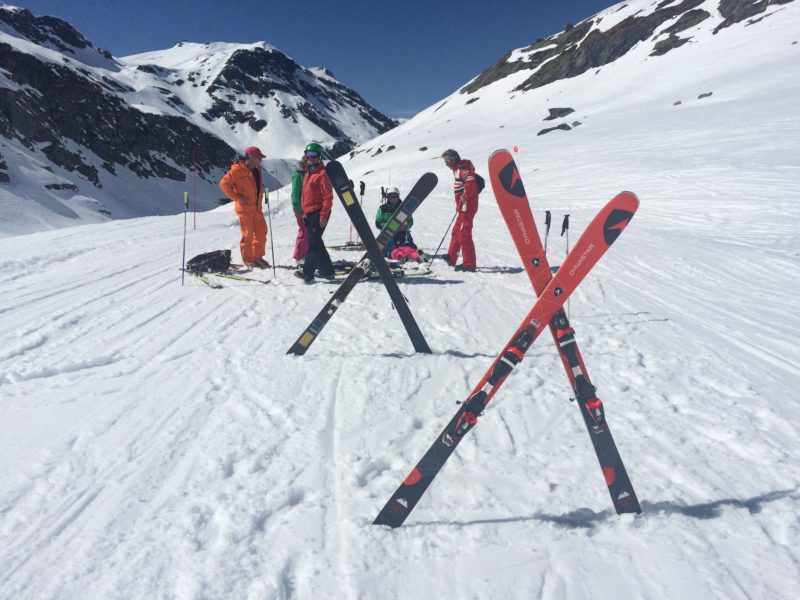
Injured skier
What is the cause?
Kalnaraups Arnolds – I think it’s just the weather is not good, not enough of fresh snow and slopes just to ice… harder to control if ya going to fast…
Tom Thorp – Kalnaraups Arnolds that’s no excuse.
People should ski under control.
You can’t go too fast, endanger other people then blame ice.
If you’re knowingly skiing beyond your control, you need to stop.
The sport of skiing is about dealing with whatever the mountain throws at you appropriately. Whatever!
Steve Angus – Tom Thorp a career ski instructor of 25 years (almost) full time I can’t tell you how CORRECT you are.
The ski industry unfortunately has based itself on image and not a lot else.
Tom Thorp – Blame ski manufacturers for promoting high performance over control, also for selling the idea that everyone should be on the piste with fat skis on, which require speed and angulation way above what’s appropriate to operate.
But most of all blame resorts for a lack of safety enforcement, for cramming resorts with unsafe numbers of people (France is particularly guilty of this) and not properly educating skiers on safe piste behaviour.
When I was learning as a kid, the piste code was a huge part of lessons.
It was everywhere, on posters, on the piste maps and passes.
Now as an instructor, I not only come across hundreds who don’t know it exists, but also have to regularly explain it to people on piste when they are breaking the piste code, causing accidents that endanger my clients and are baffled when I hold them accountable!
In North America people get passes taken off them for dangerous skiing, there are similar rules to driving in terms of collisions/insurance – people on piste to control speeding skiers.
I want the mountains to be a liberating place where anyone can enjoy the thrill of skiing.
But there needs to be some control for the safety of everyone, and actually get back to an educational culture where people realise that the definition of good skiing is about flawless control.
That’s where you can really enjoy speed and performance.
Joseph Dibb: Tom Thorp, The percentage who will look at ski manufactures and buy the top shelf is surely low, maybe the issue is with hire shops giving performance skis out because clients have over thought their ability?
Tom Thorp: Joseph Dibb,I’m not really referring to the skis themselves or the top shelf ones.
It’s more the marketing around them and the general trend to promote a culture of racer performance to recreational skiers who don’t have the technique/experience to handle those expectations.
An intermediate ski is made to be comfortable, flexible, easy to turn low speeds.
But all the media and marketing around them talks of carving huge angles, “edge hold” – shows them being ripped up by pro skiers and all that guff.
They try and copy it and end up in hospital.

Verbier Piste Patrol. Image © PlanetSKI
So, what can be done about it?
David Potter – After a lifetime of skiing which began in Norway when I was 18, I have finally retired – yes about 60+ years of experience. (I am 82)
For more than 20 years we have lived in Austria and there were two winters where we spent the entire winter season here in the mountains which was marvellous. I had a whole season lift-pass offering 1,800 lifts and 2,200 km of piste.
I never got bored!
Years ago we only had drag lifts until the luxury of the singe seat chair lift appeared. Then it became a double chair lift and then one for three or four people and finally one for six or eight.
The next development was a similar capacity lift on the other side of the slope. Then gondolas and all the rest of it.
At one point some resorts were boasting that they had “uphill transport for 43,000 skiers an hour”.
The main danger is simply too many people skiing at the same time so accidents are absolutely inevitable.
In Austria alone there are 75,000 hospital admissions every season.
I guess the same in all major ski countries. A nurse I know told me that her hospital and the next one along the valley had ordered 100 tons of plaster of Paris between them in readiness for the winter.
All this is in the interests of profit which is understandable as a new gondola costs around 40M€ to install so they do need to get their money back but not at the expense of their clients please.
WHAT IS NEEDED IS CONTROL OF THE TOTAL NUMBER OF PEOPLE ON THE PISTE AT ANY ONE TIME.
They already have the technology so it would be quite possible to do.
RESORTS SHOULD BE LICENSED TO HOST A MAXIMUM NUMBER OF SKIERS AT ANY ONE TIME.
Paul Newis – Withdraw their ski pass.
Glenn Robinson – Dangerous skiers should have their lift passes withdrawn but in most of Europe I see little or no monitoring of dangerous behaviour on the pistes.
Another big factor is a fundamental flaw in technique which is very prevalent now.
I call it “shoulder rotation” skiing.
Far too many skiers nowadays have misunderstood what they see good skiers do and think the turn is initiated by rotating their shoulders rather than by the angulation of the lower legs to press the inside edges of the skis into the snow, hence allowing the skis to do what they are designed for.
They therefore hurtle down the slopes with little or zero edge control and are basically an accident waiting to happen.
People who ski this way will clearly struggle on hard and icy slopes.
John Yates-Smith – Whilst it’s obvious that people SHOULD be taking more care, SHOULD stay in control and SHOULD be considerate to everyone else, there are all sorts of things people should do but don’t, unless there are sanctions.
I think that people who cause accidents where other people are hurt should be sued.
Obviously they don’t do it on purpose, any more than a driver who hits a pedestrian meant to do so.
But until people know that there are serious consequences if they make a mistake, no-one will care.
I still have the bruises from a guy who skied into me four years ago.
He was in the air when he took me out.
He gave a false name and address.
This wouldn’t normally happen on the roads, and reluctantly I reckon we need similar rules for the pistes.
Martin Georhe Alder – European resorts have to start patrolling the slopes effectively.
I have seen all of the types of behaviour described.
One perpetrator I challenged had an attitude of ” I am in perfect control”, totally ignoring the fact that others, like beginners leaving the crowd around a lift station might not.
Skiing at warp speed on the easy blue runs, because it’s easy , whilst ignoring the crowds of skischollers and similar on the slope is another pain.
If these folk feel they are so good, try the harder runs!
Then we have the impromptu ski races or ski cross groups on pistes.
A large group of friends decides to ski at high speed in a random line arreast formation down a slope full of slower moving traffic, carving through obvious ski school groups or families skiing carefully with young children.
I was hit on an otherwise empty slope by two so engrossed in their tail chase that number one must have cut too close to me and his number two , concentrating on his leader, hit me from behind.
I could go on.
In summary , more ski patrols.
Revoke or restrict passes for unacceptable behaviour.
Then publicise the number of passes restricted, or revoked on the day, week, season for unacceptable behaviour on screens around the resort.
Play the FIS rules and show examples and advice on how to apply them on the screens around the lift station queues.
Especially show how to pass across the path of another safely, which, from my days as a radar controller in ATC, is pass behind, not in front, as if you get it wrong the gap gets bigger, not smaller!
Remind people that we all are responsible and being a good skier doesn’t protect you from the consequences of the inability of others.
Nick Davies – unfortunately they currently have no power to police the slopes as the lift companies do not own the land, so the only people that can is the police.
In my opinion the best course of action is to enforce change, as people can not be trusted to obey signs and piste rules, and the pistes are getting busier.
This would need to be made at local council level to start with and then hopefully nationally, it would need to be a change in law to allow lift companies to enforce safety standards to save injuries, hospital visits, deaths and of course money!
Toby Fishel – Ski hire, ski manufactures, lift company, hotels, local resort tourist board and the local ski school need to work more together for a concept that all involved can benefit from for the safety, and enjoyment of the holidays skiers and the people working on the mountain the ski schools and instructors.
Otherwise something will happen and then non of the above will have any more influence over anything any more in the winter trade the laws and government might start to take control of everything if things don’t change.
I always hear ski schools saying in their programs parallel.
Loads of people try to ski parallel and think this is the ultimate goal and loads can ski parallel and hold their feet together but they just can’t change direction so they think they are parallel skiers and just go straight down and wack a power slide in to take brush off speed.
The ski schools should encourage skiers at all levels from an early start to make more skiers aware of changing direction and more shape that thus is much more important than parallel.
The big resorts the ski schools it seems just try to get people moving around the mountain as quickly as possible and then it’s just follow me and feet together the teaching really does stop when people can do that, sad really.
Martin Naughalty – I wonder how many collisions are caused by people skiing beyond they ability trying to beat “their speed records” according to the various phone apps.
Maybe through PlanetSKI we could start a campaign to have them withdrawn from the various App stores ? …. or even better just have the speed functionality withdrawn in the next software release?
Bea Deacon – People just have no self responsibility and no common sense.
Same in many areas of life and leisure these days.
Can’t switch their brains on, only concerned with their own immediate enjoyment, and unaware of the concept of consequences.
Also far too much emphasis on being a hero (fast, steep, beyond ability), not on being competent and safe (in control, on an appropriate piste).
Everyone should be made to read the FIS code and given a copy with their lift pass.

Injured skier
The International Ski Federation, FIS, has developed ‘Rules of Conduct’ that apply to all who use the pistes – regardless of what equipment they’re using.
This ‘highway code’ for the snow helps everyone to stay safe on the slopes, and should be followed at all times.
1. Respect for others
A skier or snowboarder must behave in such a way that he or she does not endanger or prejudice others.
2. Control of speed and skiing or snowboarding
Every skier or snowboarder must move in control. He must adapt the speed and manner of skiing or snowboarding to his personal ability and to the prevailing conditions of terrain, snow and weather as well as to the density of traffic.
3. Choice of route
A skier or snowboarder coming from behind must choose his route in such a way not to endanger skiers or snowboarders ahead.
4. Overtaking
A skier or snowboarder may overtake another skier or snowboarder above or below and to the right or to the left provided that he leaves enough space for the overtaken skier or snowboarder to make any voluntary or involuntary movement.
5. Entering, starting and moving upwards
A skier or snowboarder entering a marked run, starting again after stopping or moving upwards on the slopes must look up and down the slopes that he can do so without endangering himself or others.
6. Stopping
Unless absolutely necessary, a skier or snowboarder must avoid stopping on the piste in narrow places or where visibility is restricted. After a fall in such a place, a skier or snowboarder must move and clear the slope as soon as possible.
7. Climbing and descending on foot
A skier or snowboarder either climbing or descending on foot must keep to the side of the slope.
8. Respect for signs and markings
Skiers and snowboarders must respect all signs and markings.
9. Assistance
At accidents, every skier or snowboarder is duty bound to assist.
10. Identification
Every skier or snowboarder and witness, whether a responsible party or not, must exchange names and addresses following an accident.
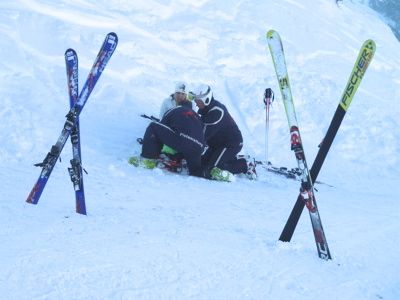
Ski Accident. Image c/o PlanetSKI
There are some mentions of Piste X in the comments:
Louise Paley – A friend and I have launched an initiative to increase awareness of the rules of the piste and we are working with the Domaines Skiables Français to educate as many people as possible regarding safety to help reduce accidents.
Please follow the Piste X Code to find out more.
We would be grateful of this campaign being shared throughout the snowsports community.
Some resorts are being very proactive with their efforts to improve piste safety.
The Grand Massif Officiel for one is on a big drive.
However, there is still a lot to be done across the alps.
Steve Angus: Piste X Code, bloody well hope they (resorts are) but I bet most will give it lip service and for every that wants to there will be two that don’t.
Don’t get me wrong it’s great that some do and I applaud them but most simply couldn’t care less.
Sadly!
Piste X Code: Steve Angus, we’re working year round and we are contacting all French resorts to see what they are doing towards piste safety.
Some are more responsive than others!
However, the Domaines Skiables Français is taking piste safety very seriously so I think things will start to change, just sadly not as fast as we’d like!
We leave the last word to regular PlanetSKI reader, BASI Trainer & Snoworks coach, Lee Townend.
In the infamous words of Pirelli tyres – “Speed is nothing without control”.
And there are many that don’t adhere to such approaches on firm & busy pistes.
The subject is clearly of huge interest.
This PlanetSKI Facebook video of a couple of near-misses on a path in the Verbier ski area that we posted earlier in the season has had more than 1.3m views with 1,000s of comments:
If you wish to add your thoughts and observations on the issue then feel free to add your comments over on the PlanetSKI Facebook page
Related Articles:
- PlanetSKI Spends A Day with the Verbier Piste Patrol
- New Survey Shows Lunchtime is When Most Accidents Occur
- British Skier Dies in Meribel

PlanetSKI logo

